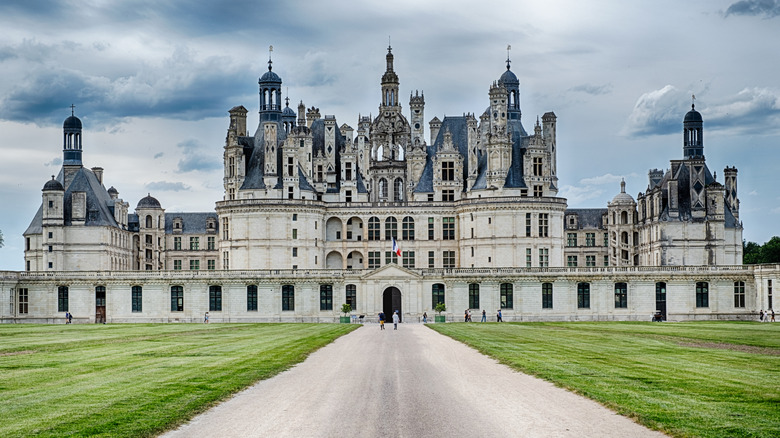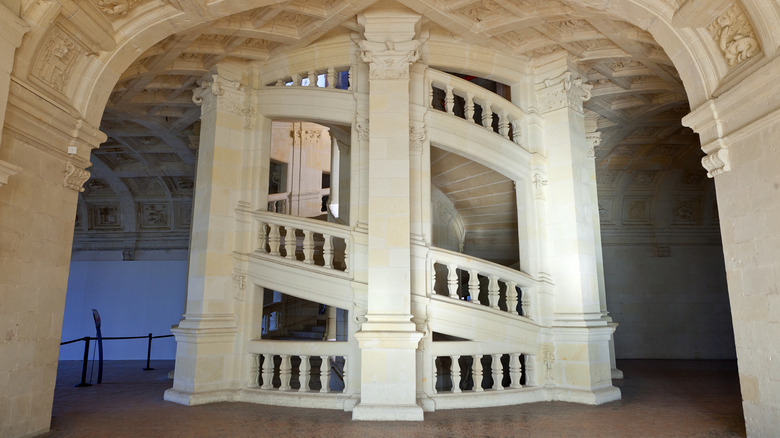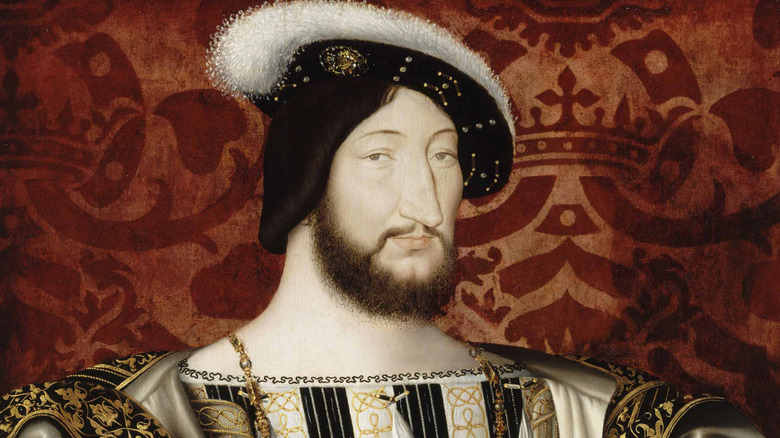France's Chambord Castle Is More Haunted Than You Know
France has a long and fascinating history, with its thousands of châteaux offering bricks-and-mortar proof of both past glories and incredible wealth. The Loire Valley in the center of the country is home to more than 300 castles of varying shapes and sizes, and arguably the most spectacular of them all is Chambord.
This 500-year-old, wedding-cake-like confection dominates the landscape, and is notable for many reasons. Chambord is the country's largest game reserve, the castle's village is the only one in the country to be state-owned, and the castle's walled park is the same size as inner Paris and the biggest of its kind in Europe.
Although it has 83 staircases, including the celebrated helical construction at the building's heart, and 426 rooms, only 60 of them are open to the public. But there is more to Chambord than the grandeur of the architecture, the splendour of its surroundings, and the opulence of the furnishings. Ghosts of its past cling to this magnificent monument, sending shivers up the spines of many visitors. Here's a look at why France's Chambord Castle is more haunted than you know.
Some wounded soldiers never left
The Château de Chambord looks like something out of a fairy tale, with its pale stone and elaborate, iconic roof line. But this beautiful building has also played a small part in a groundbreaking period in French history: The Franco-Prussian War. Between 1870 and 1871, the conflict broke out amid a squabble over the Spanish throne. France objected to the Prussian candidate — a relative of the Prussian king — and demanded that they be permanently eliminated from consideration.
A telegram, doctored by Prussian chancellor Otto von Bismarck, prompted France to declare war, and almost all the German states stood by Prussia. The conflict was considered one of the bloodiest of the age, thanks to military innovations such as the machine gun. Even though the French forces had these new weapons, they fared worse in almost every battle. Thousands of men were injured, and some of the casualties were brought to Chambord, which was serving as a field hospital.
Many of them did not survive, though it is claimed that their presence in and around the castle can still be felt — and seen. Numerous visitors to Chambord have reported hearing unexplained footsteps or groans. Others claim to have witnessed the ghosts of soldiers, presumably from the Franco-Prussian War, wandering around the castle's park, in the corridors, and on the grand staircase.
The legend of the Black Hunter
Today, thousands of people flock to Chambord Castle, but the building as it stands now looks nothing like previous constructions. In the 10th century, the land belonged to the Counts of Blois, who erected a fortified castle and held on to it for roughly 200 years. That's quite the feat, considering the accusations leveled at Thibault, the first count of Blois.
According to the legend, Thibault — known as the "trickster" – was late for a church service, and the priest started the mass without him. Infuriated, the "mad" nobleman killed the cleric in a fit of rage. However, he did not go unpunished: Thibault was forced to spend eternity hunting a deer, without ever being able to catch it. He has since become known as "The Black Hunter."
Throughout the autumn months in the run-up to Halloween, locals in and around Chambord's forested park have often claimed to have heard the count's cries and shouts as he seeks his quarry. And he's not alone, as the Black Hunter is said to roam the area along with black dogs and unnamed, black-haired companions.
Chambord has a royal ghost
In 1519, the newly crowned King Francis I was fresh from victory at the Battle of Marignano, and wanted to demonstrate his power in the most visible way possible. He commissioned the building of Chambord, which was initially a square keep surrounded by four towers that was then embellished over time. In between the business of being monarch, Francis I returned to Chambord many times to oversee the work, proudly showing it off to visiting diplomats and even Charles V, the Holy Roman Emperor himself.
Despite his obvious passion for the castle project, the French king ended up barely setting foot inside it. During the 32 years of the monarch's reign, he rarely stayed at Chambord and for no more than a few weeks. Francis I died before the building work was completed, but his connection to the castle turned out to be stronger than anyone imagined.
From time to time, his richly dressed ghost is said to be seen wandering the corridors of Chambord at night. According to local legend, the spectral Francis I is scouring the castle that, for him, was such an important symbol of his rule, though it's not clear what he's looking for. There have also been reports of lights flickering at windows, as well as whispered voices being heard in the castle's halls.
Da Vinci's influence from beyond the grave?
Almost as famous as Chambord's breathtaking exterior is the incredible staircase at its heart. The double helix is a draw for thousands of visitors, largely because of its connection to Leonardo Da Vinci. It was not, as some believe, built by the renowned Italian artist and engineer, but he may have inspired it.
Although there have been reports of people sensing a cold presence near the intertwined staircase, which some may link to Da Vinci, his influence on Chambord could be even more profound. For hundreds of years, no architectural plans for the castle could be found, and the helical staircase was similar to many of Da Vinci's designs found in his Codex Atlanticus. But the Italian died before a single brick of Chambord was laid.
In 1681, King Louis XIV's historian André Félibien stumbled across a now-lost wooden model that was tantalisingly similar to Chambord, as well as Da Vinci's architectural sketches. The man largely credited with building Chambord, Domenico da Cortona, also knew Da Vinci, having collaborated on plans to celebrate the Dauphin's birth in 1518. Leonardo died the following year, but many claim Da Vinci's spirit is forever linked to Chambord Castle.




